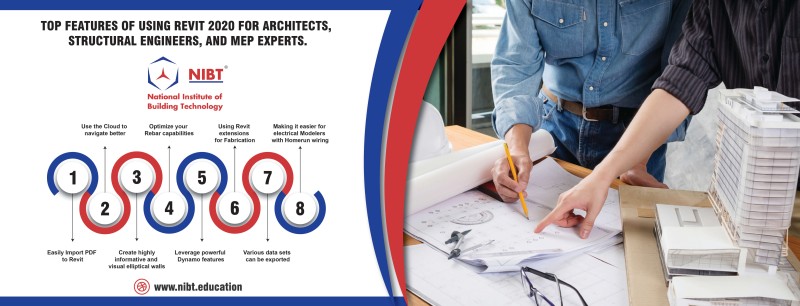Top reasons why Architects and BIM professionals should upgrade their Revit version to 2020
Revit has been a game-changing software or BIM authoring tool for AEC professionals, and it has progressed significantly since 2002. The 2020 version provides new and enhanced features and enhancements that help designers, engineers, modelers, & project stakeholders connect, create, and optimize BIM workflows at a geometric rate.
If you’re an architect, designer, modeler, or AEC firm specializing in BIM-based projects or workflows, then Revit 2020 is an excellent authoring tool that extends its capabilities from designing to construction. The design intent is a highly augmented feature that helps AEC professionals create accurate and detailed designs through coordinated and holistic modeling.
The most significant features or enhancements are observed in design workflows for electrical systems, wall geometries, curtain & elliptical walls.

Easily Import PDF to Revit
- This feature or enhancement helps designers import a PDF file into Revit
- Architects, Designers, and Modelers can modify the PDF, and use its vector data to perform quick tracing, create linework or build walls
- This feature is used to enhance BIM workflows whilst using traditional document formats
Use the Cloud to navigate better
- The cloud feature for Revit 2020 allows users the flexibility to access and navigate 3D models in the cloud
- This enhances work efficiency and collaboration for other team members who don’t possess Revit
- The cloud model for non-Revit users can be viewed in BIM360
Create highly informative and visual elliptical walls
- Elliptical and Curtain walls are important aspects of 3D modeling and BIM workflow
- The ellipse tool uses temporary dimensions and center marks in the 2020 version
- These elliptical walls are similar to arc walls
- Wall forms can be leveraged for design and development capabilities
Optimize your Rebar capabilities
- The path to travel tool gives users the capability to use Rebar tools like –
- Rebar copy
- Multi-rebar annotation
- Free-form rebar
- These Rebar tools in Revit 2020 were designed to give users greater accuracy, design predictability, and work efficiency
Leverage powerful Dynamo features with Revit 2020
- Dynamo, a powerful coding plugin or tool comes built-in with Revit 2020
- This makes it easier to manage DYN or Dynamo Files
- Users can garner greater productivity whilst modeling steel connections using the Dynamo package
- This package uses new scripts to integrate with the Dynamo Player
Using Revit extensions for Fabrication
With Revit 2020, designers can use the new Fabrication Exports Add-in function to set-up & export data from a Revit fabrication layout
Various datasets can be exported viz.
- Ancillary Data
- Item Data
- Linear Nest Data
- Before exporting any fabrication data from Revit, all of the above need to be set up to export it from Revit to a CSV file
Making it easier for electrical Modelers with Homerun wiring
- Leverage more control over the display of home runs or homerun wiring
- User-defined home runs & arrow styles to tick single and multi-circuit home runs arrows to user project specifications
- It significantly improves documentation based on electrical designs
Overall, it may be said….
With the significant enhancement in Revit 2020, based on workflows and other features, users, enterprises, and project stakeholders can leverage business intelligence from a digital perspective. This includes forecasting, preconstruction, estimating, analytics, modular construction, and more.

